
Stress, recovery and physical activity are part of everyday life. The key is finding the right balance between them. Accurate physiological measurements and the Firstbeat Graph reveal a view of your body’s reactions and overall well-being.
The Firstbeat Graph is a visual representation of the measurement days conducted using Firstbeat Life. The graph can be found in the Results section of the Firstbeat Life app alongside your daily results.
From the Firstbeat Graph, you can see your body’s stress reactions, recovery, and light activity and exercise during the day. You will learn exactly what your day looks like and how your body reacts to different situations. This is how you understand, for example, whether your sleep is restorative, what raises your stress levels, whether you can recover at work, and if your day includes enough physical activity.
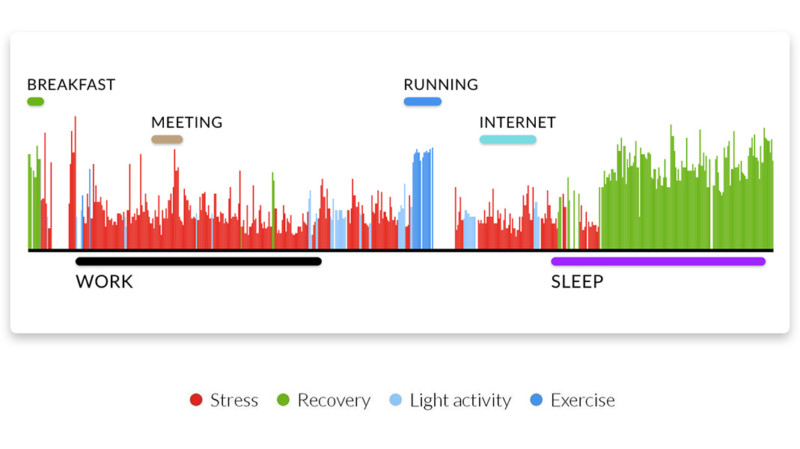
Figure 1. The Firstbeat Graph allows you to see your body’s reactions over the course of the day.
Stress is shown on the graph in red, recovery in green, light activity in light blue, and more strenuous exercise in a darker blue. The height of the bar describes the intensity of the reactions. For example, a higher red bar means a stronger stress response, while a higher green bar means more effective recovery.
In addition, diary entries added by the user during the measurement via the app help you link specific reactions to specific events. Adding as many diary entries as possible during a measurement makes it easier to better identify, for example, which things are stressful and which help you recover, as well as what kind of exercise produces optimal health benefits for your fitness and recovery capacity.
Combining the Firstbeat Graph data with your overall daily score displayed in the app complete the data you need to know whether the balance between stress and recovery, the quality of sleep, and the effects of exercise are at a sufficient level to support your health and well-being.
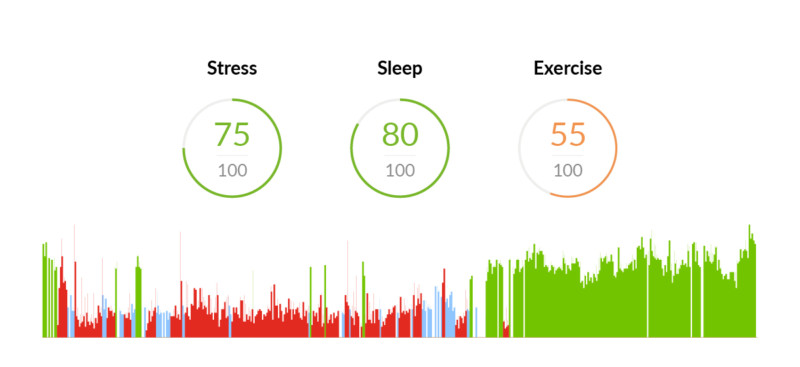
Tips to interpret the data in your Firstbeat Graph
1. Assess if there is enough recovery during the day
- It is important to be able to recover regularly during the day including during the workday. Even a short, relaxing break will help you cope better. From the number of green bars in the Firstbeat Graph, you can easily see moments of recovery during the day alongside any periods of red stress.
- Investigate how much and when your days include recovery. Combine the information and use your own diary entries to identify the things that helped you recover (FIGURE 2). Continue to take advantage of these tools.
- Have you done something you think is restorative, but it doesn’t show up as recovery in the graph? This can be caused by, for example, acute stress, a stressful situation that occurred a moment earlier, or physical performance that prevented your body from calming down. It can also be so-called positive stress that raises the body’s state of alertness momentarily but rewards you mentally and can promote recovery afterwards. Positive stress does not linger in the same way as harmful stress or prevent recovery at rest or during sleep.
- Even a small additional recovery moment can have a big impact overall. To increase recovery in your day, try relaxation exercises, meditation, an energising microbreak reading, listening to music, or taking a short nap. Also monitor their effects in future measurements so you can identify the best ways you recover and add them to your routine.
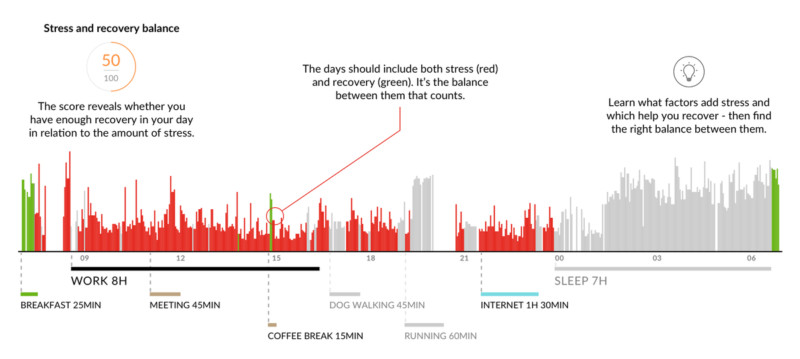
Figure 2. Note the green spike in the middle of the day. Even a brief recovery moment can make a difference and help you to maintain good performance.
2. Find out if your sleep is restorative
- Take a closer look at the sleep portion of your graph. Does it contain mostly green recovery or red stress during your sleep? And how how soon does recovery begin once asleep? (FIGURE 3). Together with the sleep sub-scores, this will give you a better understanding of whether your sleep has been sufficiently restorative during the day.
- Don’t be overly concerned with one off nights with poor restorative sleep. A good goal is for your sleep to be restorative most nights of the week. The impact of sleep is affected by the length of the sleep period and the amount and quality of recovery during sleep.
- Try to identify the reasons your sleep is not restorable. Assess whether the situation is acute or chronic. With regular measurements, you also get a longer-term view. The most common causes of poor recovery are illness, stress, excessive evening activity, or alcohol. Look at your day-to-day choices on the graph to see whether there are any factors that explain good and bad overnight recovery.
- Make small changes to your daily life and monitor the effects with new measurements. To improve your recovery during sleep, you can try the following: Avoid intense exercise and other things that increase alertness late at night, eat a healthy evening meal, and calm down before going to bed by, e.g., reading or relaxing.
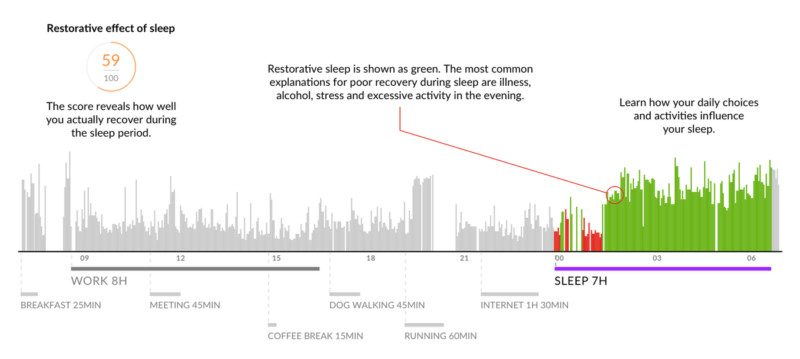
Figure 3. Check if your sleep period is restorative or if stress occurs during the night. Also, examine how soon after going to bed your body will begin to recover.
3. Make sure your days also include light activity and exercise
- First, check if your graph includes both light activity and more intense exercise (FIGURE 4). It would be good to have both on a regular basis during everyday life. In addition to the graph, the exercise score tells you whether you have exercised enough to promote your health and well-being and considers your Fitness Level.
- The greatest health effects are gained through vigorous and strenuous exercise, but light activity also increases well-being and increases your physical activity score in Firstbeat Life. At least half an hour of exercise on most days of the week is a good goal.
- Monitor the effects of exercise on stress, recovery, and sleep. Very strenuous exercise or late-night exercise may momentarily impair overnight recovery, for example, by delaying the onset of restorative sleep. As a counterbalance to exercise, it is important to provide adequate rest and recovery.
- Low heart rate exercise and body care such as yoga or stretching may not show up as exercise. Their positive effect can instead be seen in improved recovery after exercise and during sleep. With your own diary entries and by following the effects of different choices on the measurement results, you will better understand how your body reacts.
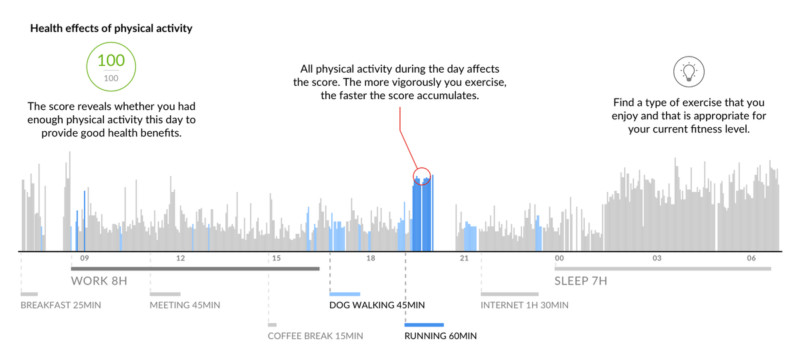
Figure 4. Verify that your days appropriately include light activity as well as exercise that promote your health.
Does your day include enough recovery and physical activity to balance out stress? Find out with Firstbeat Life and reach your health and performance potential.
You might also be interested in

Firstbeat Life Corporate Wellness Solution – FAQ
Firstbeat Life is our cutting-edge subscription-based corporate wellness solution and the new way to support physical and mental well-being. Since its arrival and our Virtual Launch event, there has been a lot of interest and questions about the new…
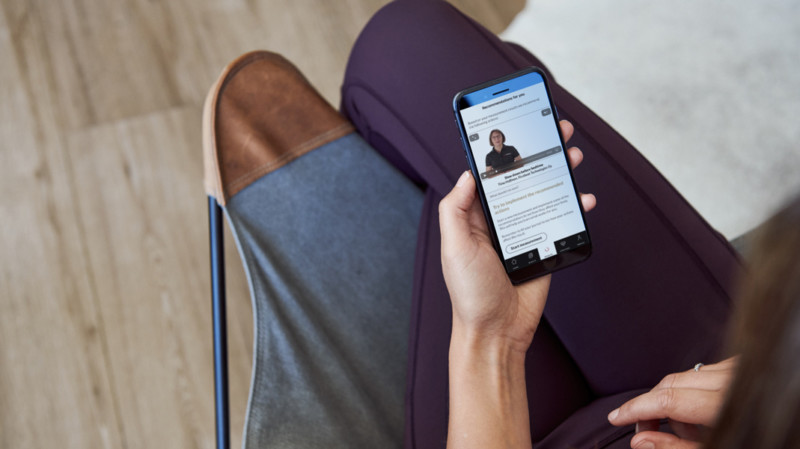
Video Recommendations: How to Turn Your Health Insights into Actions
Making healthy choices in everyday life isn’t always easy. And, as individuals, there’s no one-size-fits-all solution. That’s where personal health data and recommendations from the Firstbeat Life corporate wellness solution…

Is Hidden Stress Holding You Down? 5 Reasons You Don’t Always Recognize Stress
It is not always easy to recognize when you are suffering from too much strain or inadequate recovery. Discover the reasons for hidden stress.
